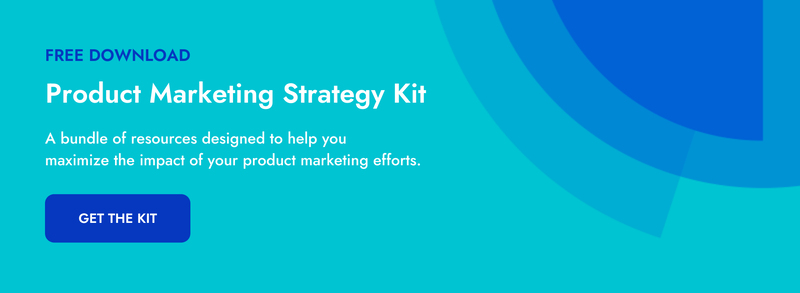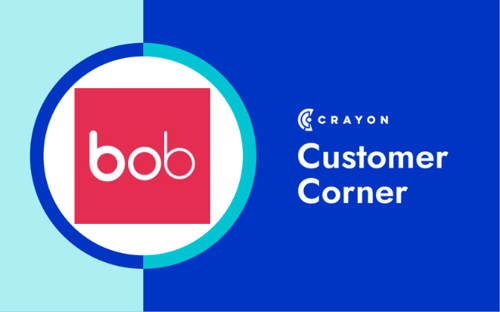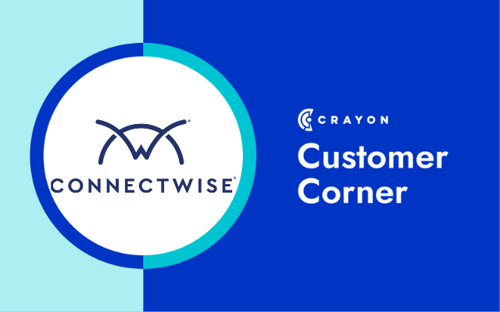 Crayon's Product Marketing Spotlight is an interview series where we chat with product marketers to get a glimpse into their careers and gain unique insight into product marketing strategy. In this edition of Product Marketing Spotlight Series, we shine the light on Jake Godgart, Product Marketing Manager at Rapid7.
Crayon's Product Marketing Spotlight is an interview series where we chat with product marketers to get a glimpse into their careers and gain unique insight into product marketing strategy. In this edition of Product Marketing Spotlight Series, we shine the light on Jake Godgart, Product Marketing Manager at Rapid7.
ED: What is your role?
JG: Product Marketing Manager (PMM) for the Rapid7 Managed Services business portfolio:
- Managed Detection & Response (MDR)
- Managed Vulnerability Management
- Managed Application Security
ED: What does the company do?
JG: Rapid7 provides technology, services, and research to help organizations securely advance their business in the face of an ever-evolving cybersecurity landscape. The visibility, analytics, and automation delivered through our Insight cloud simplifies the complexities of cybersecurity so security teams can reduce vulnerabilities, monitor for malicious behavior, investigate and shut down attacks, and automate routine tasks. The business unit I PMM, our managed security services, helps security teams of all sizes accomplish the above while further strengthening their overall security program and maximizing their security outcomes. It’s an exciting field to be in and the company is growing like crazy!
ED: Tell me a little bit about your career path. What was your first job, and what else happened along the way to bring you to where you are now?
JG: I got lucky and fell into Product Marketing from the start of my career and found some really tremendous mentors. My father was a serial entrepreneur and I was fortunate to get to learn from him and his team throughout high school and college. During school breaks, I interned for a B2B SaaS provider, Autotask, in various roles across the Marketing, Sales, and Product management. I found mentors in Scott Opiela and Jay McBain who took me under their wings to teach me about marketing and how it could be used to grow the business and create value for our customers. I owe a lot to Scott and Jay for teaching me the foundations for what I do today. Between the two of them, I feel like I learned the equivalent of an MBA course in Go-to-Market strategy.
Fast forward to post-graduation where I moved to Boston to work at LogMeIn, Yottaa, and Upserve in Product Marketing roles. My experience at those three ran the gamut of Product Marketing - build out the Product Marketing department from scratch, messaging and positioning, pricing and packaging, competitive intelligence, M&A strategy, integrating acquired brands under our umbrella, win/loss, buyer persona development, and sales enablement. I had other great mentors along the way like Angus Davis, Dave Hoffman, and Andrea Kayal.
Now I’m at Rapid7 to take that knowledge I learned from building product marketing programs at the start-up level and apply those lessons to help our large Managed Services division grow even faster.
ED: How much of your day-to-day involves competitive intelligence?
JG: In previous roles with lean teams I’d spend between 30-70% of my time on CI; developing battlecards, understanding competitors’ GTM strategies, building financial models to forecast competitive growth, comparing product capabilities, etc. Crayon helped cut that time down tremendously. Today at Rapid7 I’m lucky to have the resources to take on the majority of the CI work, but I still spend a fair amount staying on top of competitors.
ED: What is your advice for someone who is planning a product launch for the first time?
JG: There’s a ton that goes into product launches, but here are some of my top tips:
- Start early and collaborate: A launch is something that should be done in collaboration with other teams. Almost every team can impart or will be impacted nt the launch.
- Establish solid success criteria: Set clear objectives and measurable KPI’s before launch.
- Figure out how much time to invest and what to do: Have a clear understanding of the scope of your launch - is it a feature update or a brand new product?
- Gain buy-in from all stakeholders and build a plan: Build a launch plan and clearly communicate it with your team, so that everyone is on the same page.
- Segment your plan: Break down your launch into phases and plan for each separately.
- Focus on your ideal buyer: Understand your ideal buyer in and out, and focus your efforts on getting in front of those people.
- Prime the pump: Create additional pieces of collateral that will build up the value of your pre-launch such as teasing it in blogs or additional marketing material.
- Arm your team: Give your team the materials and training they need to effectively communicate the value of your launch to your target buyer.
- Measure your success and learn for next time: Analyze what worked and what didn’t, and have an open discussion to evaluate the launch with your team.
- Celebrate adoption, not the launch: Celebrate the way your launch is impacting the market, not the launch itself.
ED: What skills do you think are necessary for a product marketer to grow in their career?
JG: Do what you can to become the internal voice of the customer. Ask customers questions and use that to inform your decisions across the business. Be inquisitive, challenge assumptions, and connect the dots. Always refer back to the value your solution brings your customer. Use that information to help other teams perform at their best. Think of Product Marketing as the tide that raises all the other business unit ships.
ED: How do you get your sales team to actually use your sales enablement resources?
JG: I’ve found the greatest success in getting teams to use your resources is by partnering early on with the sales team to create the resources. It’ll build trust and it makes them a bit more invested in the success of the tool and gain widespread use. I’m able to leverage the sales team’s sponsorship to encourage peers to use the resources -- especially when there’s proof of success. Circulating win-wires and having reps call out that they used the resource to win the deal goes a long way.
ED: What are your favorite product marketing resources?
JG: I leverage other PMMs at other companies often. I’ve learned a ton from how other businesses do Product Marketing, especially in a similar business model but in different industries. It’s always interesting to see how another company tackles challenges they have or positions their business in competitive markets.
ED: What’s the best career advice you’ve ever received?
JG: In Product Marketing, your goal should be to make the buyer/customer the superhero of their story. And it’s your mission to illustrate that story to them and articulate the value of why you. The best way to figure that out is to talk to your customers and ask the right questions:
- What causes them to start their search?
- Why do they buy?
- What is their before state?
- What’s the negative consequence of that?
Then try to understand how our solution makes them a hero (in their eyes):
- What does that desired state look like?
- What will be their positive outcome, both for the business and in their role?
- What is actually required to do that?
- How can we help them move to the desired state?
- What’s the value to them - professionally, emotionally, and personally?
Having those answers allows for more meaningful conversations with the sales teams about the value we provide, product teams about what the customer needs, and marketing teams about how to reach more people like them.
ED: What’s the best book you’ve read recently? Work or non-work related?
JG: I finally got around to reading Mindset by Carol Dweck, and now I wished I did a long time ago. I encourage everyone to read it. It teaches to look at everything as a challenge, learn from failure, experiment and take risks, and let go of the fixed mindset to really grow professionally and as a person.

Related Blog Posts
Popular Posts
-
 The 8 Free Market Research Tools and Resources You Need to Know
The 8 Free Market Research Tools and Resources You Need to Know
-
 6 Competitive Advantage Examples From the Real World
6 Competitive Advantage Examples From the Real World
-
 24 Questions to Consider for Your Next SWOT Analysis
24 Questions to Consider for Your Next SWOT Analysis
-
 How to Create a Competitive Matrix (Step-by-Step Guide With Examples + Free Templates)
How to Create a Competitive Matrix (Step-by-Step Guide With Examples + Free Templates)
-
 How to Measure Product Launch Success: 12 KPIs You Should Be Tracking
How to Measure Product Launch Success: 12 KPIs You Should Be Tracking





